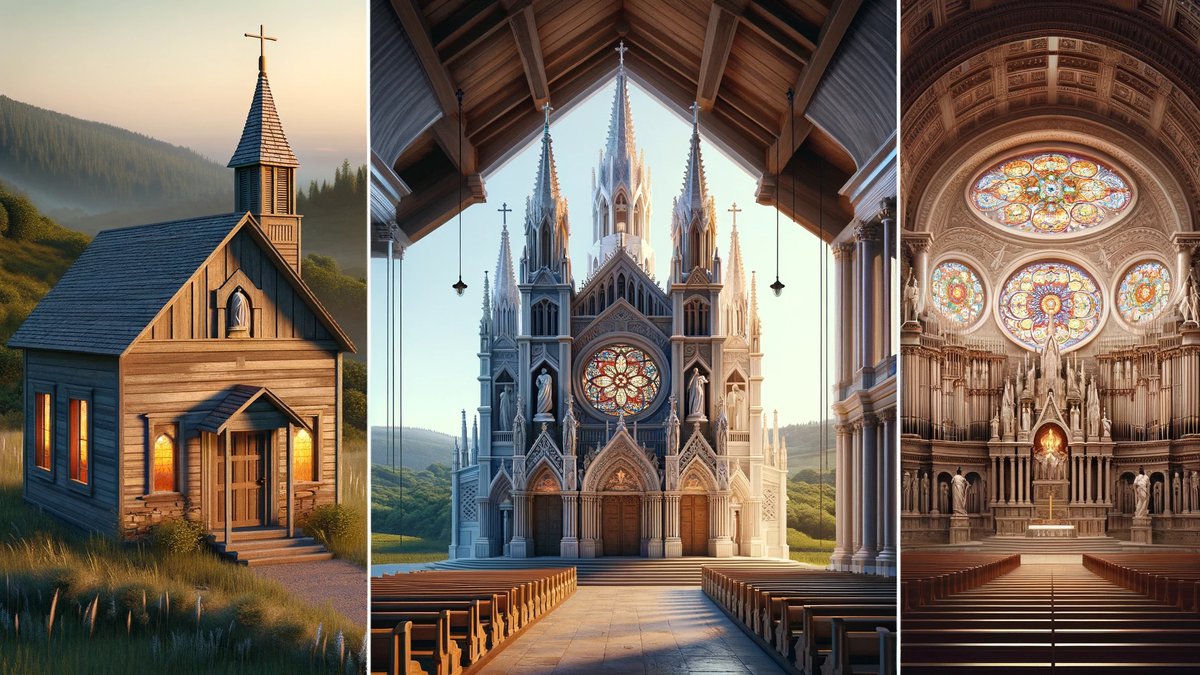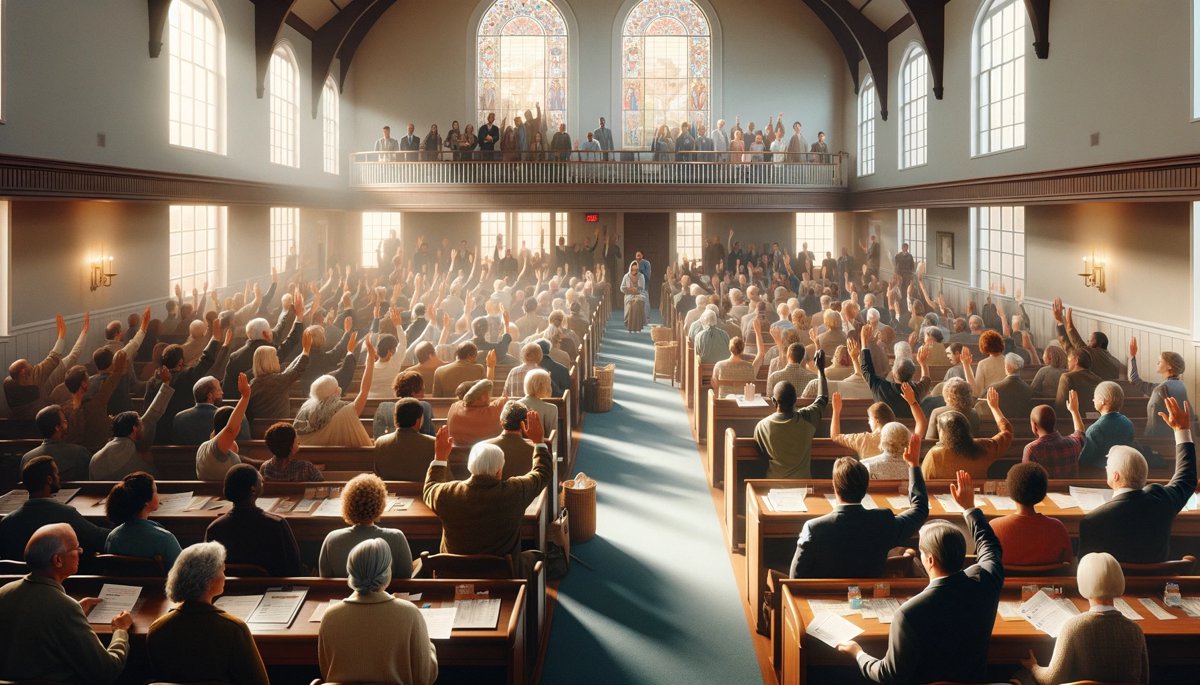Home>Arts and Culture>How Does The Shape Of The Church Of San Vitale In Ravenna Differ From Traditional Basilica Design


Arts and Culture
How Does The Shape Of The Church Of San Vitale In Ravenna Differ From Traditional Basilica Design
Published: February 10, 2024
Ericka Andersen, an editor at Christian.net, expertly merges digital strategy with content creation, focusing on faith and societal issues. Her communication skills enhance the platform's engaging narratives, fostering meaningful dialogue on belief's impact on society.
Discover the unique architectural features of the Church of San Vitale in Ravenna, showcasing a departure from traditional basilica design. Explore the intersection of art, culture, and history in this iconic structure.
(Many of the links in this article redirect to a specific reviewed product. Your purchase of these products through affiliate links helps to generate commission for Christian.net, at no extra cost. Learn more)
Table of Contents
Introduction
The architecture of churches has long been a captivating subject, reflecting the evolution of cultural and religious influences throughout history. Among the myriad of church designs, the traditional basilica layout has stood as a timeless symbol of grandeur and spiritual significance. However, the Church of San Vitale in Ravenna deviates from this conventional blueprint, boasting a unique and captivating shape that sets it apart from its counterparts.
As we delve into the intricacies of the Church of San Vitale, we will unravel the distinct features that differentiate its design from the traditional basilica layout. This exploration will shed light on the architectural ingenuity and cultural context that have shaped this remarkable structure, offering a deeper understanding of its significance within the realm of art and religious heritage. Let's embark on a journey through time and space to uncover the captivating nuances of the Church of San Vitale in Ravenna.
Traditional Basilica Design
The traditional basilica design serves as a testament to the enduring legacy of ancient Roman architecture, characterized by its rectangular layout and a central nave flanked by aisles. This architectural blueprint has been revered for its grandeur and symbolic representation of spiritual sanctity, embodying the essence of religious worship and communal gathering.
At the heart of the traditional basilica design lies the nave, a central space that extends longitudinally, creating a sense of awe-inspiring expansiveness. This central area is often flanked by aisles on either side, providing additional space for congregants and facilitating the flow of movement during religious ceremonies. The nave is typically delineated from the aisles by a series of columns or arches, adding a touch of architectural splendor to the overall structure.
One of the defining features of the traditional basilica design is the inclusion of a semicircular apse at one end of the nave, serving as a focal point for religious rituals and symbolizing the divine presence. The apse often houses the altar, emphasizing its significance as the sacred locus of spiritual communion. This architectural element not only accentuates the visual grandeur of the basilica but also imbues it with a profound sense of reverence and solemnity.
The traditional basilica design also incorporates a spacious atrium or narthex at the entrance, welcoming congregants into the sacred realm of the church. This transitional space serves as a threshold between the secular world and the sacred interior, inviting worshippers to embark on a transformative journey as they cross the threshold into the hallowed confines of the basilica.
Throughout history, the traditional basilica design has served as a cornerstone of architectural innovation, inspiring countless iterations and adaptations across diverse cultural landscapes. Its enduring legacy continues to resonate in contemporary church architecture, underscoring its timeless appeal and enduring relevance in the realm of religious and cultural heritage.
The traditional basilica design stands as a testament to the ingenuity and artistic prowess of ancient builders, reflecting a harmonious blend of spiritual symbolism and architectural magnificence. Its enduring influence has left an indelible mark on the architectural landscape, shaping the visual language of religious structures and perpetuating a legacy of awe-inspiring grandeur.
This section provides a comprehensive overview of the traditional basilica design, illuminating its architectural elements and symbolic significance within the context of religious and cultural heritage. As we transition to the exploration of the Church of San Vitale in Ravenna, we will juxtapose its unique shape against the backdrop of the traditional basilica design, unraveling the captivating nuances that distinguish it as a singular masterpiece of architectural innovation.
The Church of San Vitale in Ravenna
The Church of San Vitale in Ravenna stands as a testament to the architectural ingenuity and cultural richness of the Byzantine era. Constructed in the 6th century during the reign of Emperor Justinian I and Empress Theodora, this extraordinary edifice embodies the fusion of Roman, Byzantine, and Eastern influences, resulting in a structure of unparalleled beauty and historical significance.
The church's octagonal design deviates from the traditional basilica layout, marking a departure from the longitudinal nave and aisles that characterize conventional Roman architecture. Instead, the central space of San Vitale unfolds in a mesmerizing octagonal configuration, creating a sense of harmonious symmetry and spatial elegance. This distinctive layout reflects the Byzantine penchant for centralized architectural forms, evoking a profound sense of spiritual centrality and divine harmony.
As one steps into the hallowed interior of San Vitale, the interplay of light and space unfolds in a breathtaking display of artistic mastery. The soaring arches and intricate mosaics adorning the walls and ceilings transport visitors to a realm of transcendent beauty, where the interweaving motifs of biblical narratives, imperial grandeur, and celestial symbolism converge in a mesmerizing tapestry of visual splendor.
The focal point of the church is the sanctuary, where the high altar stands as the centerpiece of spiritual reverence. Encircled by a luminous ambulatory, the sanctuary exudes an aura of celestial radiance, inviting contemplation and awe. The intricate marble columns and exquisitely crafted capitals bear witness to the consummate craftsmanship of the artisans who brought this sacred space to life, infusing it with a timeless aura of majesty and devotion.
The apse of San Vitale, adorned with a resplendent mosaic depicting the enthroned Christ surrounded by angelic hosts, serves as the visual and spiritual apex of the church. This iconic representation of divine majesty and transcendence encapsulates the Byzantine aesthetic of spiritual exaltation, inviting worshippers to immerse themselves in the ineffable mysteries of faith and salvation.
The Church of San Vitale in Ravenna stands as a living testament to the enduring legacy of Byzantine art and architecture, captivating visitors with its timeless allure and spiritual resonance. Its unique octagonal shape, resplendent mosaics, and evocative symbolism converge to create an immersive experience that transcends the boundaries of time and space, inviting all who enter to partake in the eternal beauty of divine worship and artistic expression.
Differences in Shape
The Church of San Vitale in Ravenna stands as a striking departure from the traditional basilica design, notably in its distinctive shape. Unlike the longitudinal layout of a traditional basilica, San Vitale unfolds in a mesmerizing octagonal configuration, creating a sense of harmonious symmetry and spatial elegance that sets it apart as a masterpiece of architectural innovation. This unique shape reflects the Byzantine penchant for centralized architectural forms, evoking a profound sense of spiritual centrality and divine harmony.
The octagonal design of San Vitale introduces a captivating interplay of light and space, captivating visitors with its unconventional yet harmonious structure. The absence of a longitudinal nave and aisles, characteristic of traditional basilicas, gives rise to a sense of unity and equilibrium within the sacred space. The octagonal layout allows for a fluid circulation of worshippers, enveloping them in an immersive experience that transcends the confines of conventional architectural norms.
The absence of a traditional apse, a prominent feature in basilica design, further distinguishes San Vitale's shape. Instead of a semicircular apse, the sanctuary of San Vitale is enveloped by a luminous ambulatory, creating a sense of openness and interconnectedness within the sacred precinct. This departure from the conventional apse design underscores the church's innovative architectural vision, inviting worshippers to engage with the sacred space in a manner that transcends traditional spatial boundaries.
The octagonal shape of San Vitale also serves as a canvas for the resplendent mosaics that adorn its walls and ceilings, infusing the sacred space with a transcendent aura of artistic grandeur. The interweaving motifs of biblical narratives, imperial grandeur, and celestial symbolism converge within the octagonal expanse, creating a visual tapestry that transcends the limitations of traditional architectural forms. This fusion of shape and artistic expression elevates San Vitale to a realm of unparalleled beauty and spiritual significance, inviting visitors to immerse themselves in a transcendent journey through the interplay of form and symbolism.
In essence, the differences in shape between the Church of San Vitale and traditional basilica design encapsulate a profound departure from conventional architectural norms, ushering visitors into a realm of spatial harmony and artistic transcendence. The octagonal configuration of San Vitale stands as a testament to the enduring legacy of Byzantine architectural innovation, inviting all who enter to partake in the eternal beauty of divine worship and artistic expression.
Conclusion
In conclusion, the Church of San Vitale in Ravenna stands as a timeless testament to the enduring legacy of Byzantine art and architecture, captivating visitors with its unique shape and resplendent artistic expression. The departure from the traditional basilica design, marked by its distinctive octagonal layout, reflects the Byzantine penchant for centralized architectural forms and spatial harmony. This departure from conventional norms gives rise to a transcendent experience that transcends the boundaries of time and space, inviting all who enter to partake in the eternal beauty of divine worship and artistic expression.
The captivating interplay of light and space within San Vitale's octagonal expanse creates a sense of harmonious symmetry and spatial elegance, enveloping worshippers in an immersive experience that transcends the confines of traditional architectural norms. The absence of a traditional apse and the introduction of a luminous ambulatory further distinguish the church's shape, inviting worshippers to engage with the sacred space in a manner that transcends traditional spatial boundaries.
The resplendent mosaics that adorn the walls and ceilings of San Vitale infuse the sacred space with a transcendent aura of artistic grandeur, weaving together biblical narratives, imperial grandeur, and celestial symbolism within the octagonal expanse. This fusion of shape and artistic expression elevates San Vitale to a realm of unparalleled beauty and spiritual significance, inviting visitors to immerse themselves in a transcendent journey through the interplay of form and symbolism.
In essence, the Church of San Vitale in Ravenna stands as a living testament to the enduring legacy of Byzantine art and architecture, captivating visitors with its timeless allure and spiritual resonance. Its unique octagonal shape, resplendent mosaics, and evocative symbolism converge to create an immersive experience that transcends the boundaries of time and space, inviting all who enter to partake in the eternal beauty of divine worship and artistic expression.















